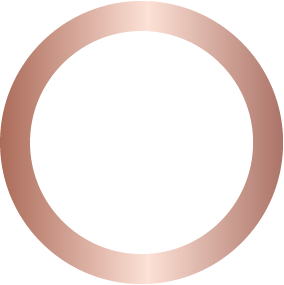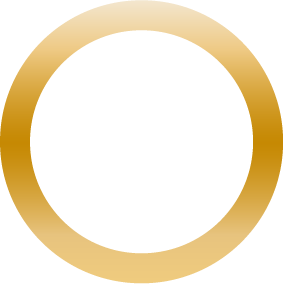Build Your Own Ring

Shop by Setting Style
Shop by Ring Style

FAQs about lab-grown diamond
halo engagement rings
A halo setting is a popular choice for engagement rings. The small diamonds surrounding the center stone gives the illusion of a larger and more brilliant diamond, without the added cost. This can be especially appealing for those who want a larger look for their engagement ring without exceeding their budget.
Additionally, the halo setting provides added protection to the center stone, making it less likely to become damaged or loose. The design of the halo can also complement various styles and shapes of center stones, making it a versatile option for any taste or preference.
Finally, a halo setting can add a unique and sophisticated touch to any engagement ring, creating a timeless and classic look that will never go out of style.
Overall, a lab-grown diamond halo engagement ring is a beautiful and responsible choice that combines ethical and sustainable production with stunning design.
The most popular carat sizes for the center diamond of a lab diamond halo engagement ring range from 0.5 carats to 2 carats. The halo setting can enhance the size and appearance of the center diamond, making it appear larger than it actually is. Therefore, even a smaller center diamond can still make a big impact when surrounded by a halo of smaller diamonds. This makes them a popular choice for those who want a bigger-looking diamond without having to spend more money.
The choice of carat size ultimately depends on personal preference and budget, but for a better balance of size and value, oval diamonds in the 0.5 to 1 carat range are often a popular choice for the center stone of a lab diamond halo engagement ring. It's always best to try on different carat sizes to see what looks best on your hand and fits within your budget.
Choosing a lab-grown diamond as the center stone for your halo engagement ring comes with various benefits. As lab-grown diamonds are identical in the physical, chemical and optical properties to natural diamonds, they are indistinguishable to natural diamonds and are a more affordable alternative without compromising on quality.
Additionally, lab-grown diamonds are ethically and sustainably produced, making them a responsible choice for environmentally and socially conscious consumers. What’s more, lab-grown diamonds are also available in larger sizes and higher clarity grades than natural diamonds, providing a wider range of options for your oval ring's center stone.
Some popular styles of halo engagement rings include:
-
Classic Halo: A classic halo features a single center diamond or gemstone surrounded by a ring of smaller diamonds or gemstones.
-
Double Halo: A double halo setting features two concentric circles of diamonds or gemstones around the center stone, adding more sparkle and making the center stone appear larger.
-
Vintage Halo: A vintage halo setting features intricate detailing and designs, giving the engagement ring a unique and antique feel.
-
Floral Halo: A floral halo has a nature-inspired design with a halo of diamonds that resemble flower petals.
Ultimately, the style of halo engagement ring you choose will depend on your personal taste and preference.
When choosing the most suitable style for your halo engagement ring, there are several factors to consider. First, think about the shape of the center stone. Round and cushion-cut diamonds are the most popular shapes for halo rings, but oval, pear, and princess cuts are also popular.
Next, consider the metal type, such as white gold, yellow gold, rose gold, or platinum, and decide which one complements your skin tone and personal style.
You should also consider the size and quality of the diamonds in the halo and band, as well as the overall design and craftsmanship of the ring. For a more classic and timeless look, opt for a plain metal band with a single halo, while a more intricate and ornate design with multiple halos can add extra sparkle and drama to the ring.
Finally, think about your budget and choose a style that meets your needs while remaining within your price range. By taking these factors into consideration, you can select a halo engagement ring that is not only stunning but also perfect for you.
The best metals for a lab-created diamond halo ring depend on personal preference, but popular choices include platinum, white gold, yellow gold, and rose gold.
-
Platinum: a durable and hypoallergenic metal that is also highly valuable.
-
White gold: a classic choice that complements the sparkle of a diamond.
-
Yellow gold: gives the ring a warm, traditional look that complements the warm tones of an oval diamond.
-
Rose gold: creates a romantic and unique look that is becoming increasingly popular.
Ultimately, the choice of metal comes down to personal style, skin tone, and budget.

Pear-shaped Diamond Engagement Rings
Unveil the captivating beauty of pear-shaped diamond engagement rings, where sophistication meets timeless romance. Our exquisite collection showcases the allure of this unique and elongated shape, renowned for its graceful silhouette and brilliant sparkle. Each pear-shaped diamond is meticulously crafted to symbolize love's journey, offering a stunning centerpiece that captures hearts and creates lasting memories. With its versatility and distinctive charm, a pear-shaped engagement ring is the perfect expression of your individual style and the promise of a lifetime together. Explore our exceptional selection and find the perfect pear-shaped diamond ring to embark on your forever love story.
Unveil the captivating beauty of pear-shaped diamond engagement rings, where sophistication meets timeless romance.

About Pear Shaped Engagement Rings
Created in the 1960s, the princess cut diamond became commercially popular in the 1980s, rapidly gaining attention as a top choice for engagement rings for their modern, elegant, and timeless look. This unique diamond cut boasts a square or rectangular shape and an array of sparkling facets that create a stunning display of light and brilliance.
With its impressive fire and brilliance, the princess-cut diamond has become a favourite among people of all ages and backgrounds. Its impressive sparkle makes the diamond the perfect choice to represent the purity, strength, and beauty of love. The princess cut diamond offers exceptional versatility, and it can be set in a wide range of ring styles, making it a top choice for couples who seek a diamond that is both modern and classic.
FAQ
About Pear Shaped Engagement rings
Absolutely! Pear-shaped diamond rings, also known as teardrop engagement rings, are a stunning and popular choice for engagements. The unique shape of the pear diamond symbolizes tears of joy and is a romantic representation of love and commitment. The elongated silhouette and brilliant sparkle of the teardrop shape make it eye-catching and captivating.
Pear-shaped diamond rings offer a blend of elegance, sophistication, and individuality, allowing the wearer to stand out with a distinctive style. Whether set in a classic solitaire, a dazzling halo, or a glamorous three-stone design, pear-shaped engagement rings make a statement and create a lasting impression. With their timeless beauty and symbolic meaning, pear-shaped diamond rings are a perfect choice for couples seeking a ring that embodies their love and marks the beginning of a lifelong journey together.
There is no definitive answer to this question, as different people may have different preferences and opinions. However, some general guidelines are: wear the ring with the point facing towards your fingernails if you want to create the illusion of longer fingers, or wear it with the point facing towards your wrist if you want to balance out your hand proportions.
Pear-shaped diamond rings are also suitable for stacking with other bands or complementary gemstone rings to create a trendy and personalized look. This adds dimension and visual interest to your hand. You can also consider pairing your pear-shaped diamond ring with a contoured wedding band that complements the shape to create a cohesive and harmonious bridal set.
Wearing a pear-shaped diamond ring is about expressing your personal style and celebrating your love. Embrace its beauty and wear it with confidence, making it a symbol of your unique story.
When it comes to selecting the best metal options for a pear cut diamond ring, there are several popular choices to consider.
-
Platinum: a premium metal that beautifully complements the brilliance of a pear-shaped diamond. It offers a sleek and timeless look while providing excellent strength and resistance to wear.
-
White Gold: a classic and versatile option for pear-shaped diamond rings. It pairs well with the diamond's sparkle and gives a bright and contemporary appearance.
-
Yellow Gold: offers a warm and traditional look and adds a touch of elegance to pear-shaped diamond rings. Its rich hue provides a beautiful contrast to the diamond's brilliance, creating a captivating combination.
-
Rose Gold: gained popularity for its romantic and feminine appeal. Its pinkish hue adds a unique and modern touch to pear shaped diamond rings, making them stand out from the crowd.
At Vesirio™, we offer pear shaped and teardrop diamond rings in a variety of metal options, allowing you to choose the one that best suits your style and complements the beauty of your precious diamond.
Choosing the right carat size for a pear-shaped diamond ring requires careful consideration to ensure it matches your preferences and budget. Several factors influence the ideal carat size, including personal style, finger size, and desired visual impact. Generally, larger carat sizes enhance the dramatic effect of the teardrop shape, making it more prominent on the finger. However, keep in mind that higher carat weights also come with a higher price tag.
It's essential to strike a balance between size and quality, prioritizing cut, color, and clarity to maximize the diamond's beauty. Opting for a slightly smaller carat size can be a wise choice to allocate your budget towards a higher quality diamond as pear-shaped diamonds tend to look larger than other shapes of the same weight due to their elongated shape.
At Vesirio™, we offer a range of carat sizes for princess cut diamond rings, allowing you to find the perfect balance between size and budget while maximizing the captivating visual impact.
The cost of a pear-shaped diamond ring varies depending on several factors, such as: the quality and size of the diamond, the type and quality of the metal, the design and complexity of the setting, and the brand and reputation of the jeweler. However, as a general rule of thumb, you can expect to pay less for a pear-shaped or teardrop diamond ring than for round cut diamond rings of similar quality and size. This is due to the fact that round diamonds are more popular and in higher demand.
Nevertheless, the overall cost of a pear-shaped diamond ring can still vary greatly depending on the specific characteristics and the overall design of the ring. At Vesirio™, we offer a wide selection of both princess cut and round cut diamond rings, lab-grown and natural, ensuring that you can find the perfect ring within your desired budget and preferences.
When it comes to the best setting for a pear-shaped diamond ring, there are several popular options to consider:
-
Solitaire setting: showcases the pear-shaped diamond as the centerpiece, allowing its unique shape and brilliance to take center stage.
-
Halo setting: a circle of smaller diamonds surrounds the pear-shaped diamond, amplifying its sparkle and adding an extra touch of glamour.
-
Bezel setting: encircles the diamond with a metal rim, providing both protection and a sleek aesthetic. Nice choice for a more vintage-inspired look
-
Three-stone setting: with two side stones flanking the pear-shaped diamond, creates a balanced and elegant composition.
Ultimately, the best setting for a pear-shaped diamond ring depends on personal preference and style. At Vesirio™, we offer a range of exquisite settings that can be customized to perfectly showcase your pear-shaped diamond, creating a breathtaking engagement ring that captures hearts and stands the test of time.
A pear-shaped engagement ring, also known as a teardrop engagement ring, is a stunning and elegant choice for those seeking a unique and eye-catching design. This diamond shape features a rounded end and a pointed end, resembling a tear or a drop. The elongated silhouette of a pear-shaped diamond creates a graceful and feminine look on the finger. With its brilliant sparkle and versatility, a pear-shaped engagement ring stands out as a symbol of romance and individuality.
The distinctive shape allows for various setting options, such as solitaire, halo, or three-stone designs, each enhancing the diamond's beauty in its own way. Whether you prefer a classic or a modern style, a pear-shaped engagement ring offers a timeless and captivating choice for expressing your love and commitment.

Lab-grown diamond engagement rings
Vesirio™ strives to make the beauty of lab-grown diamond engagement rings available to everyone. Every piece handcrafted by our skilled jewelry artisans is created solely for you. All collections are extraordinary and stand out, there's always the one you'll like.

Loose
lab-grown diamonds
Vesirio™ offers multiple options for loose lab-grown diamonds that are ethical and sustainable. Lab-created diamonds are entirely real, with the same composition, brilliance, radiance, and mesmerizing beauty as that of a natural diamond.

Customize your own lab-grown diamond rings
If you are looking to create a custom engagement ring, just simply choose your ideal diamond shape, cut, and carat, then select a setting and metal. Tell your ideas to our designers, they will pour their passion into every detail of your stunning custom piece.
More to Explore
Other Engagement Ring Styles
"I recently proposed to the love of my life with a custom ring from Vesirio. The customer service was out of this world, and they helped bring my wife’s dream ring to life. We could not be more pleased with the beautiful product and the kindness we received from the folks at Vesirio."

Don Harrell
Customer Review

"I was a little nervous when I began the process of ordering a custom-designed ring and did not know where to begin. Vesirio made this process so unbelievably fun and easy. I was able to describe exactly what I wanted and the result was even more beautiful thank I could’ve ever imagined."

Alexandra Castillo
Customer Review

"Thank you Vesirio for my gorgeous ring! I told my husband the vision I had for my engagement ring and he chose this company to get the job done. I was shocked and delighted when he proposed to me with the exact ring I’ve always dreamed of."

Leslie García-Vásquez
Customer Review

"For our anniversary, I wanted to surprise my wife with a unique diamond necklace. I spent a few weeks drawing up some sketches and shared them with the design team at Vesirio. They turned my ideas into a gorgeous diamond necklace and my wife loved it!"

Anthony J. Wirick
Customer Review

"Words could not do justice to how happy I have been with my experiences at Vesirio. A while back, I ordered custom earrings for my mother-in-law and the experience was so great that I just placed another custom diamond earring order for my fiancé. Vesirio has definitely earned a life-long customer!"

Agustin Elizalde
Customer Review

"My husband and I purchased a custom-made diamond necklace for our daughter’s graduation from University. The customer service was phenomenal and our daughter is in love with her necklace. She wears it almost every day."

Elizabeth Souders
Customer Review































































